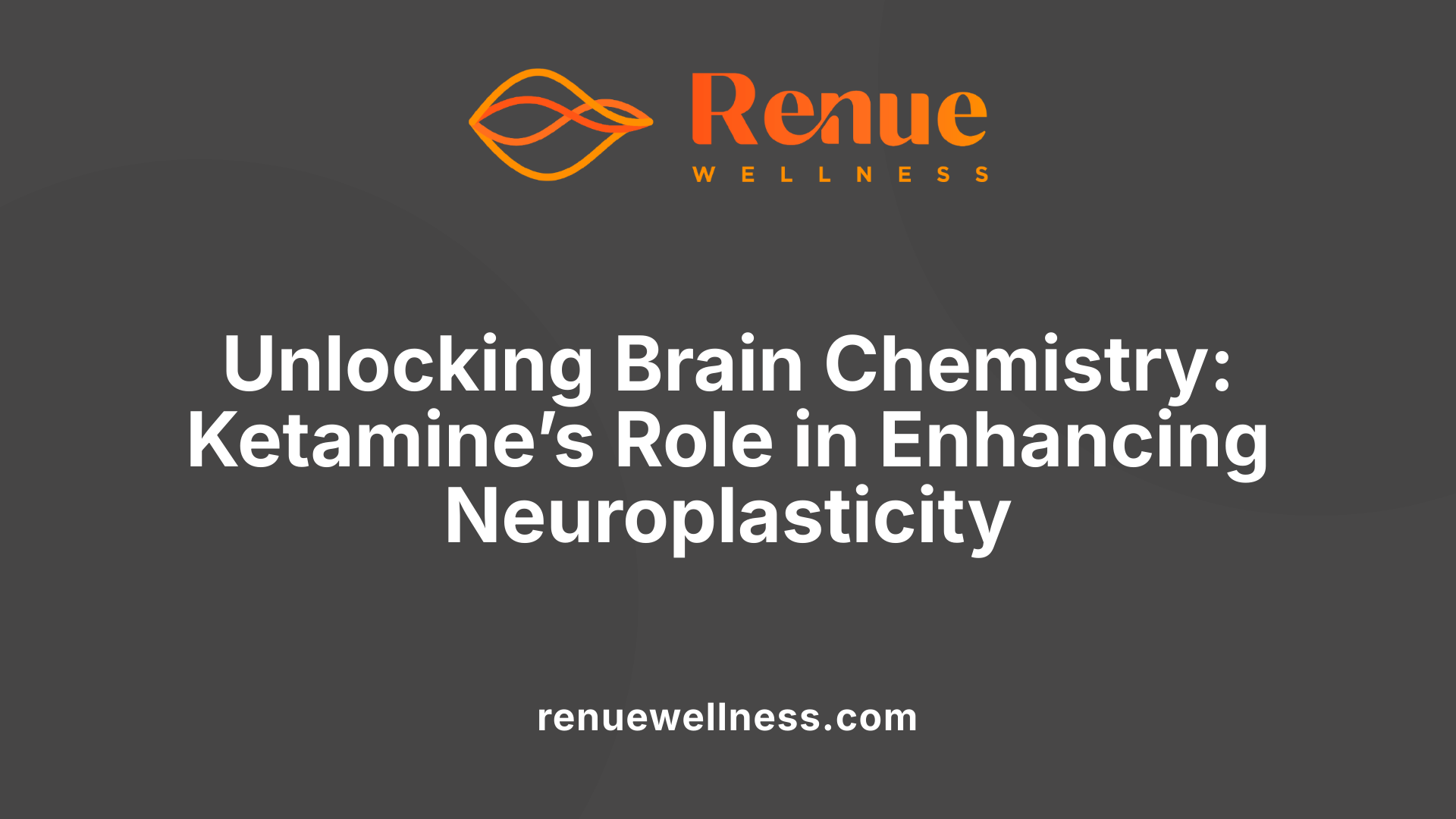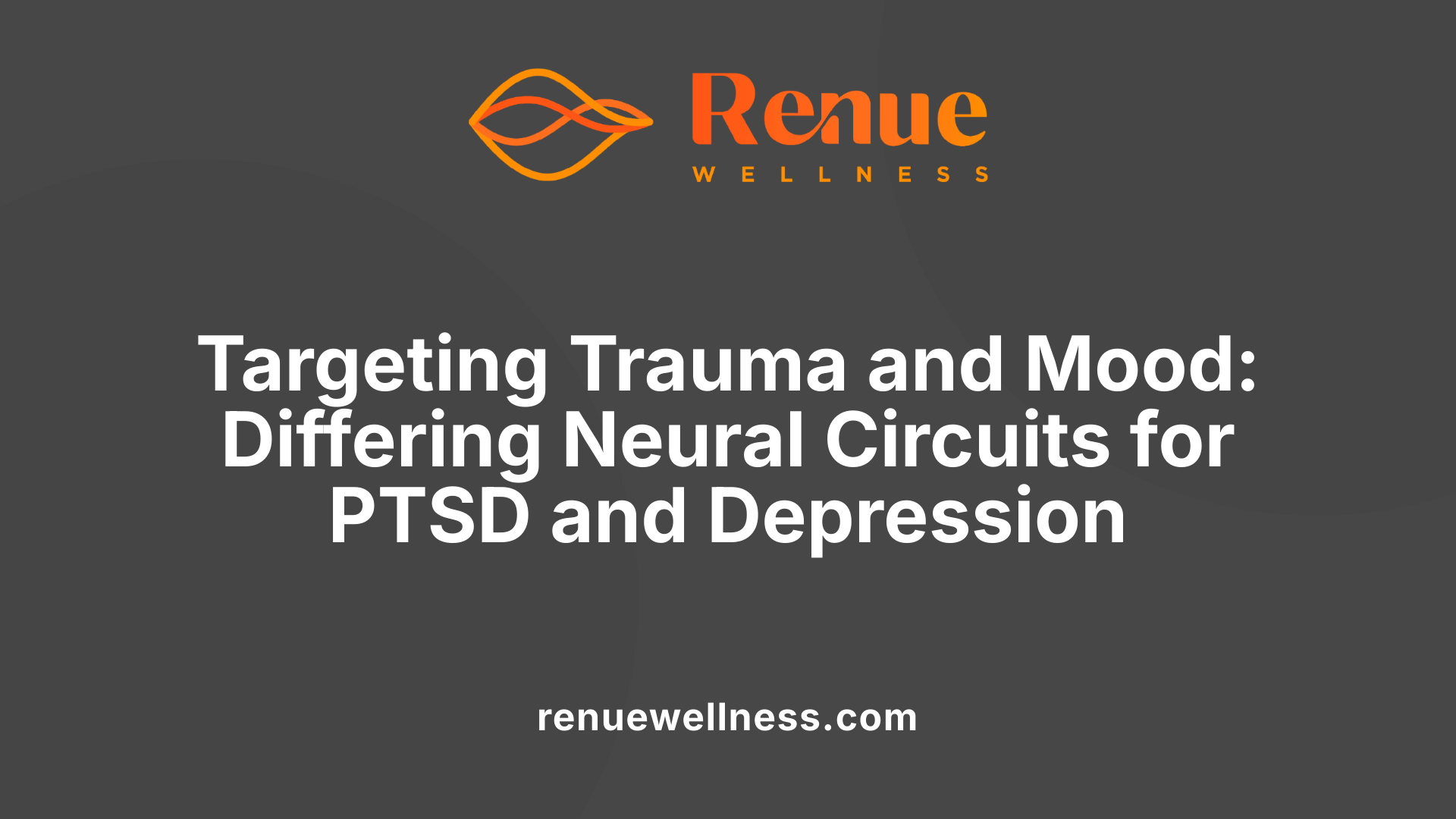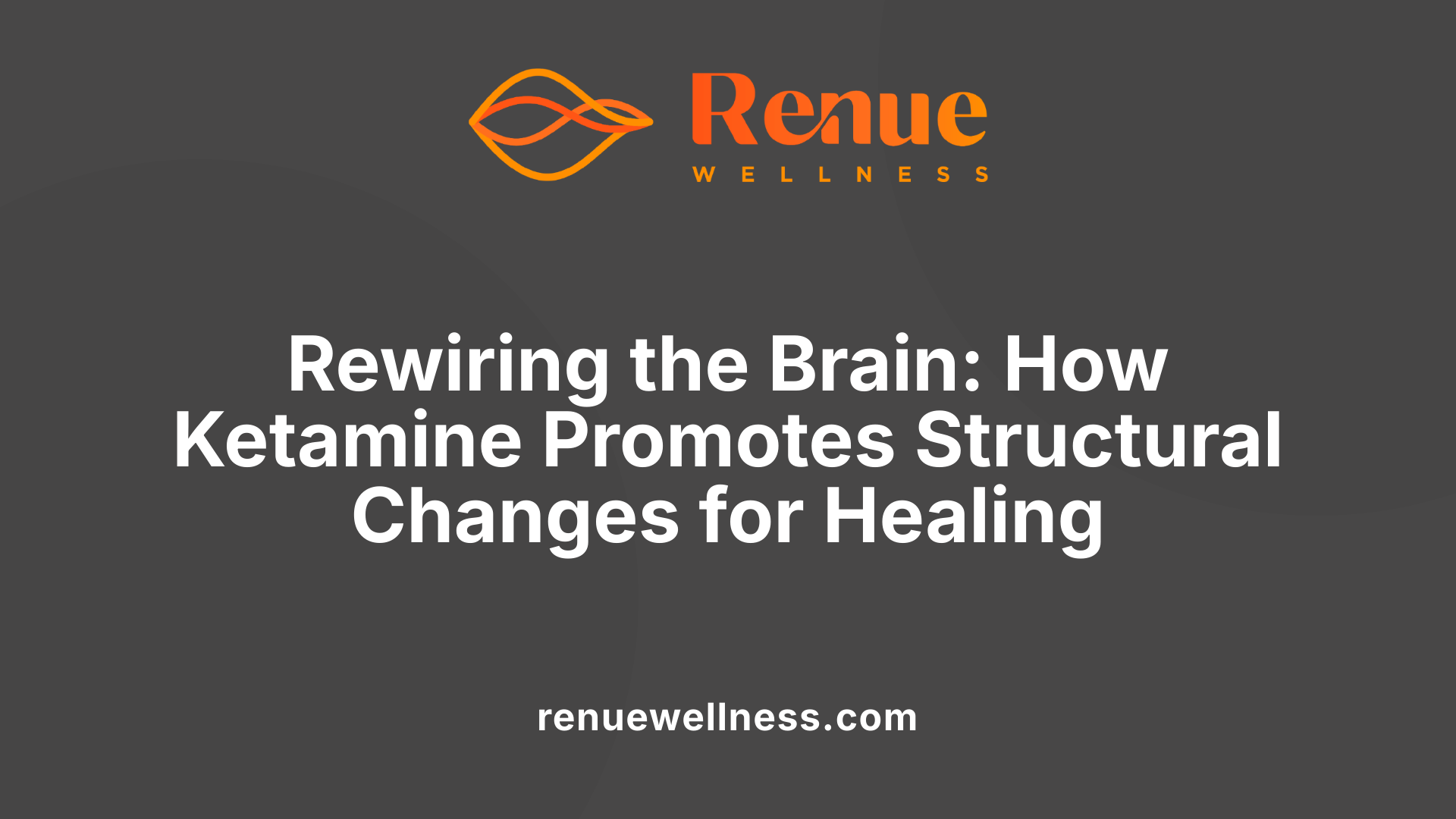How Ketamine Works in PTSD vs. Depression


July 24, 2025
Understanding the Impact of Ketamine on Brain Function in PTSD and Depression
Ketamine, traditionally used as an anesthetic, has emerged as a powerful treatment for mental health conditions like PTSD and depression. Its rapid effects and unique mechanism of action distinguish it from conventional therapies, prompting extensive research into how it exerts its therapeutic benefits. This article delves into the neurobiological pathways influenced by ketamine and compares its effects in PTSD versus depression, highlighting recent scientific findings and clinical implications.
Efficacy of Ketamine in Treating PTSD and Depression
 Recent scientific evidence supports the potential of ketamine as a rapid-acting treatment for PTSD and depression. Multiple studies have demonstrated that a single infusion can lead to noticeable symptom relief within hours, with improvements persisting for days to weeks. For instance, clinical trials have reported approximately a 25% reduction in PTSD symptoms one day and one week after a single dose, highlighting its fast onset.
Recent scientific evidence supports the potential of ketamine as a rapid-acting treatment for PTSD and depression. Multiple studies have demonstrated that a single infusion can lead to noticeable symptom relief within hours, with improvements persisting for days to weeks. For instance, clinical trials have reported approximately a 25% reduction in PTSD symptoms one day and one week after a single dose, highlighting its fast onset.
In addition to immediate effects, repeated ketamine treatments over several weeks have shown to further reduce symptoms. Some studies indicate a cumulative decline of around 12% in PTSD severity after a series of infusions, suggesting that repeated doses might offer longer-lasting benefits.
Neuroimaging studies reveal that ketamine may alter brain circuits involved in emotion regulation and fear extinction. Functional MRI results show increased connectivity between the prefrontal cortex and amygdala after treatment, which correlates with symptom improvement. These changes are thought to involve enhanced neuroplasticity, with ketamine stimulating growth factors like BDNF and activating pathways such as mTORC1, fostering neural repair.
In clinical trial settings, ketamine has also demonstrated remarkable effects in mood and anxiety symptoms. Effect sizes range from 60% to 100% symptom reduction in depression, with some reports indicating protective effects against relapse.
However, variability exists among different population groups. While civilians often experience significant benefits with repeated use, results in veterans and military populations are less consistent. This might reflect biological differences, trauma histories, or concomitant health issues.
Overall, current research portrays ketamine as an effective, fast-acting intervention that can significantly improve PTSD and depression symptoms. Despite promising findings, many experts emphasize the necessity for larger, high-quality randomized controlled trials to optimize treatment protocols and establish long-term safety. Nonetheless, ketamine remains a promising option, especially for severe or treatment-resistant cases where conventional therapies may fail.
Neural Mechanisms and Brain Chemistry Modulated by Ketamine

How does ketamine influence brain chemistry and neural changes in PTSD and depression?
Ketamine’s effects on brain chemistry are profound, particularly in treating PTSD and depression. It primarily acts as an NMDA receptor antagonist, blocking these glutamate receptors, which overactivate in stress-related disorders. This blockade leads to a cascade of neurochemical changes, including an increase in synaptic glutamate levels. Elevated glutamate then indirectly activates AMPA receptors, another type of glutamate receptor, which is crucial for fast synaptic transmission and neural plasticity.
This receptor activation stimulates signaling pathways such as the mammalian target of rapamycin (mTOR) pathway, which promotes protein synthesis necessary for synapse formation and neuroplasticity. At the same time, ketamine enhances the expression of brain-derived neurotrophic factor (BDNF), a key molecule supporting neuron growth and resilience. These molecular changes foster the growth of new synaptic connections, especially in the prefrontal cortex (PFC) and hippocampus—regions heavily involved in mood regulation, memory, and emotional processing.
Neuroimaging studies have shown that ketamine reduces activity in areas like the subgenual anterior cingulate cortex (sgACC), associated with rumination and negative emotional states prevalent in PTSD and depression. Simultaneously, it boosts activity in reward-related brain regions, aiding in the rebalancing of neural circuits disrupted by trauma or mood disorders.
Within hours of administration, ketamine induces rapid structural and microstructural brain changes. For example, diffusion tensor imaging (DTI) reveals decreased mean diffusivity (MD) in certain brain areas, indicating enhanced neuroplasticity. These neural transformations support the quick alleviation of symptoms, with effects lasting days or weeks.
Overall, ketamine’s modulation of glutamate transmission and neuroplasticity mechanisms underpins its swift therapeutic effects. It not only temporarily suppresses pathological activity but also promotes lasting neural repair. However, prolonged misuse or repeated high doses can pose risks, including neurotoxic effects. Thus, understanding these brain chemistry changes helps optimize therapeutic use while managing potential risks.
Differential Neural Pathways and Symptom Targeting in PTSD and Depression

How does ketamine work for PTSD compared to depression?
Ketamine’s mechanisms of action differ somewhat when treating PTSD versus depression, primarily because it targets distinct neural circuits involved in these conditions.
In depression, ketamine mainly works by blocking NMDA receptors, which are glutamate receptors pivotal for synaptic plasticity. This blockade results in the rapid release of glutamate, leading to enhanced neuroplasticity and activation of signaling pathways like BDNF and mTOR. These changes promote the repair and growth of neural connections, especially in the prefrontal cortex and hippocampus, alleviating symptoms of depression quickly, often within hours.
For PTSD, ketamine’s effects focus more on fear and stress circuits. It appears to decrease hyperactivity in the amygdala—the brain's fear center—and restore functional connectivity between the amygdala and the ventromedial prefrontal cortex (vmPFC), which is critical for emotional regulation and fear extinction. This stabilization of neural pathways facilitates processing traumatic memories and reduces hyperarousal, hypervigilance, and intrusive symptoms.
Both conditions involve neuroplasticity, but PTSD treatment emphasizes modulating circuits involved in fear response and trauma processing. Ketamine influences glutamate signaling via NMDA and AMPA receptors in these fear-related pathways, helping recalibrate the brain’s fear extinction processes.
In summary, while ketamine enhances neuroplasticity in both mental health conditions, its therapeutic strategy in depression focuses on mood regulation and synaptic repair, whereas in PTSD, it primarily aims to dampen overactive fear and stress responses, promoting trauma recovery.
Neuroplasticity and Brain Structure Changes in Treatment
 Recent research highlights how ketamine fosters neuroplasticity and structural brain changes to alleviate PTSD and depression symptoms. Central to its effects is the increase in brain-derived neurotrophic factor (BDNF), a protein essential for neuron growth and synaptic strength. Ketamine stimulates BDNF signaling, promoting the formation of new neural connections, particularly in regions implicated in emotion regulation.
Recent research highlights how ketamine fosters neuroplasticity and structural brain changes to alleviate PTSD and depression symptoms. Central to its effects is the increase in brain-derived neurotrophic factor (BDNF), a protein essential for neuron growth and synaptic strength. Ketamine stimulates BDNF signaling, promoting the formation of new neural connections, particularly in regions implicated in emotion regulation.
A significant pathway involved is mTORC1 (mammalian target of rapamycin complex 1). Activation of mTORC1 following ketamine infusion results in rapid synthesis of synaptic proteins, which facilitates synapse growth and repair. This process helps restore disrupted neural circuits, especially in the prefrontal cortex (PFC), hippocampus, and amygdala—areas heavily involved in trauma processing and emotional regulation.
In terms of synaptic changes, ketamine encourages the growth of new, healthy synapses. This synaptogenesis is crucial because prolonged stress and trauma can cause neurons to die or disconnect, leading to impaired brain circuitry seen in PTSD and depression. By promoting synapse recovery, ketamine effectively rewires these pathways, reducing symptoms like intrusive thoughts, hyperarousal, and emotional dysregulation.
Key brain regions involved include:
- The prefrontal cortex (PFC): critical for decision-making, impulse control, and modulating responses to fear.
- The amygdala: central in fear processing and threat perception.
- The ventromedial prefrontal cortex (vmPFC): works with the amygdala to regulate emotional responses.
Functional MRI studies show increased connectivity between the amygdala and vmPFC following ketamine treatment, which correlates with symptom improvement. This enhanced communication supports better control over fear responses and emotional regulation.
Overall, ketamine’s ability to boost BDNF production, activate mTOR pathways, and promote synaptic growth in key areas offers a molecular basis for its rapid and sustained therapeutic benefits for PTSD and depression.
Pharmacological Mechanisms and Condition-Specific Effects
What are the receptor targets?
Ketamine primarily targets N-methyl-D-aspartate (NMDA) receptors, which are a type of glutamate receptor in the brain. As an NMDA receptor antagonist, ketamine blocks these receptors, leading to increased glutamate release and activation of other glutamate receptors like AMPA. This process promotes neuroplasticity, the brain’s ability to form new connections.
Which neural circuits are affected?
In depression, ketamine boosts activity in the prefrontal cortex and hippocampus—brain regions involved in mood regulation and cognition. For PTSD, its effects focus on circuits involving the amygdala and prefrontal cortex, key pathways in fear processing and emotional regulation. By enhancing connectivity between the amygdala and ventromedial prefrontal cortex, ketamine helps diminish hyperactive fear responses.
Differences in how ketamine works in PTSD versus depression
While both conditions involve dysregulated neural pathways, ketamine’s action differs slightly. In depression, the focus is on restoring mood and cognitive function by enhancing synaptic connectivity in mood-regulating brain areas.
In PTSD, the emphasis is on modulating fear and stress circuits to weaken traumatic memories and promote fear extinction. The drug’s capacity to increase neuroplasticity accelerates recovery by helping the brain rewire maladaptive responses.
Trauma processing and fear extinction
Research suggests that ketamine enhances neuroplasticity in brain circuits involved in fear extinction. This may assist individuals in processing traumatic memories more effectively.
Functional MRI studies support this, showing increased connectivity between the amygdala (which handles fear) and the ventromedial prefrontal cortex (which suppresses fear). These changes facilitate better regulation of fear responses, improving PTSD symptoms.
Overall, despite sharing common pathways involving glutamate and neuroplasticity, ketamine’s effects are tailored to the disrupted circuits specific to each disorder. Its ability to promote neural rewiring appears crucial in both alleviating depressive symptoms and facilitating trauma processing in PTSD.
Future Directions and Clinical Implications of Ketamine Therapy
Emerging research underscores ketamine’s dual role in alleviating symptoms of PTSD and depression through rapid modulation of neural circuits involved in emotion regulation, fear processing, and neuroplasticity. While its mechanisms share common pathways, the specific effects on different brain regions and circuits highlight the importance of tailored treatment approaches. Ongoing investigations into optimal dosing, long-term safety, and combination therapies are vital for integrating ketamine into standard clinical practice. As science advances, ketamine’s capacity to induce profound, rapid neural changes offers hope for patients with treatment-resistant conditions, marking a significant shift toward neurobiologically informed mental health treatments.
References
- Ketamine for Treatment of Posttraumatic Stress Disorder
- Ketamine can rapidly reduce symptoms of PTSD and depression ...
- How Ketamine Infusion Therapy Helps PTSD Symptoms
- Ketamine Can Rapidly Reduce Symptoms of PTSD and Depression ...
- Ketamine as a therapeutic agent in major depressive disorder and ...
- How Ketamine is Helping Patients With Post-traumatic Stress ...
- Combined ketamine and psychotherapy provide no additional ...
- What is Ketamine Therapy? - Pacific Neuroscience Institute
- PTSD and CPTSD - Emerge Ketamine
Recent Posts
Conditions Treated
AnxietyDepressionOCDPTSDPostpartum DepressionPain ManagementSubstance AbuseSuicidal IdeationOur Location


